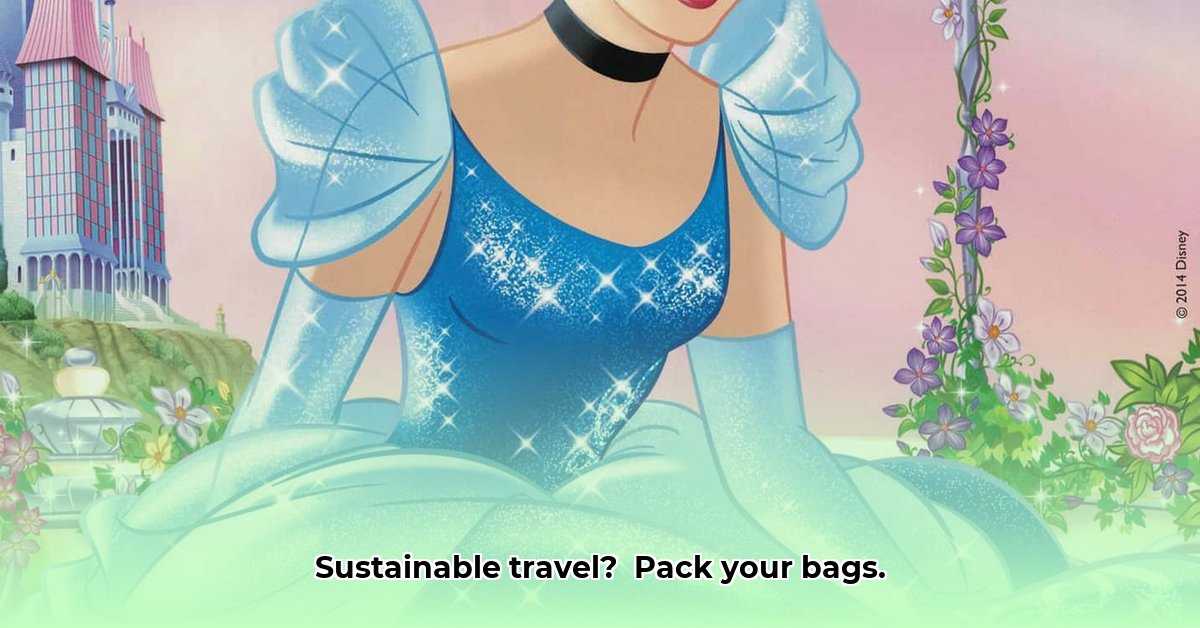
The Promise and Perils of Sustainable Luggage
Is your suitcase as green as your travel intentions? More and more, we're conscious of our carbon footprint. Princess Traveller Koffer's PT-Elements range, with its striking Desert, Canyon, and Seaweed colours, promises eco-friendly travel. But does this stylish luggage truly deliver on its sustainable pledge? Let's delve into the details.
Recycled Materials: A Step in the Right Direction
The PT-Elements collection cleverly uses recycled PET bottles and Ocean Bound Plastic (OBP) – plastic rescued from oceans before it harms marine life. This visible commitment to reducing plastic waste is commendable. It feels good to support a brand actively trying to minimise its environmental impact. But simply using recycled materials isn't the full story. How much energy was consumed during the manufacturing process? And what's the complete environmental impact across the product's entire lifecycle? These are crucial questions.
Unpacking the Sustainability Claims: A Critical Analysis
While the use of recycled PET and OBP is a positive start, a deeper dive reveals areas needing improvement. A comprehensive lifecycle assessment (LCA) – a detailed analysis of the environmental impact from raw material extraction to disposal – is missing. Transparency around sourcing, manufacturing processes, and the end-of-life plan for the luggage is limited. These omissions hinder a full assessment of the collection's true environmental footprint. Furthermore, details on fair labour practices within the supply chain remain scarce. This lack of comprehensive data makes it difficult to fully evaluate the sustainability claims.
The Broader Landscape of Sustainable Luggage Manufacturing
Creating truly sustainable luggage is a complex challenge. It's not just about the materials; the entire process matters. A full LCA is critical, alongside transparent and ethical supply chains and fair labour practices. The scalability of these eco-friendly initiatives is another key factor. Can Princess Traveller sustain its commitment to using recycled materials at scale, or is it a limited-edition strategy? These questions highlight the ongoing challenges for the whole luggage industry.
Actionable Steps: A Path Towards Greener Travel
Let's break down what's needed for more sustainable luggage production:
Princess Traveller: Conduct a comprehensive, independent LCA; publish a transparent sustainability report detailing sourcing, manufacturing, and end-of-life plans; improve traceability throughout the supply chain.
Consumers: Demand transparency from brands; support companies with robust sustainability initiatives; consider carefully whether you genuinely need new luggage; participate in proper recycling programs.
The Luggage Industry: Collaborate on industry-wide sustainability standards; invest in researching and developing truly sustainable materials; improve closed-loop recycling systems.
Governments: Implement policies to incentivize sustainable manufacturing and waste reduction; offer clear guidelines and eco-labels to help consumers make well-informed choices.
The Future of Sustainable Travel: A Shared Responsibility
Princess Traveller's PT-Elements collection represents progress, but the journey towards truly eco-friendly luggage is far from over. Transparency is key. Only through collective action – from brands to consumers, and from the industry to governments – can we create a more sustainable future for travel. This isn't just about a trend; it's about the health of our planet. Let’s continue demanding accountability and transparency from the brands we support. The future of sustainable travel depends on it.